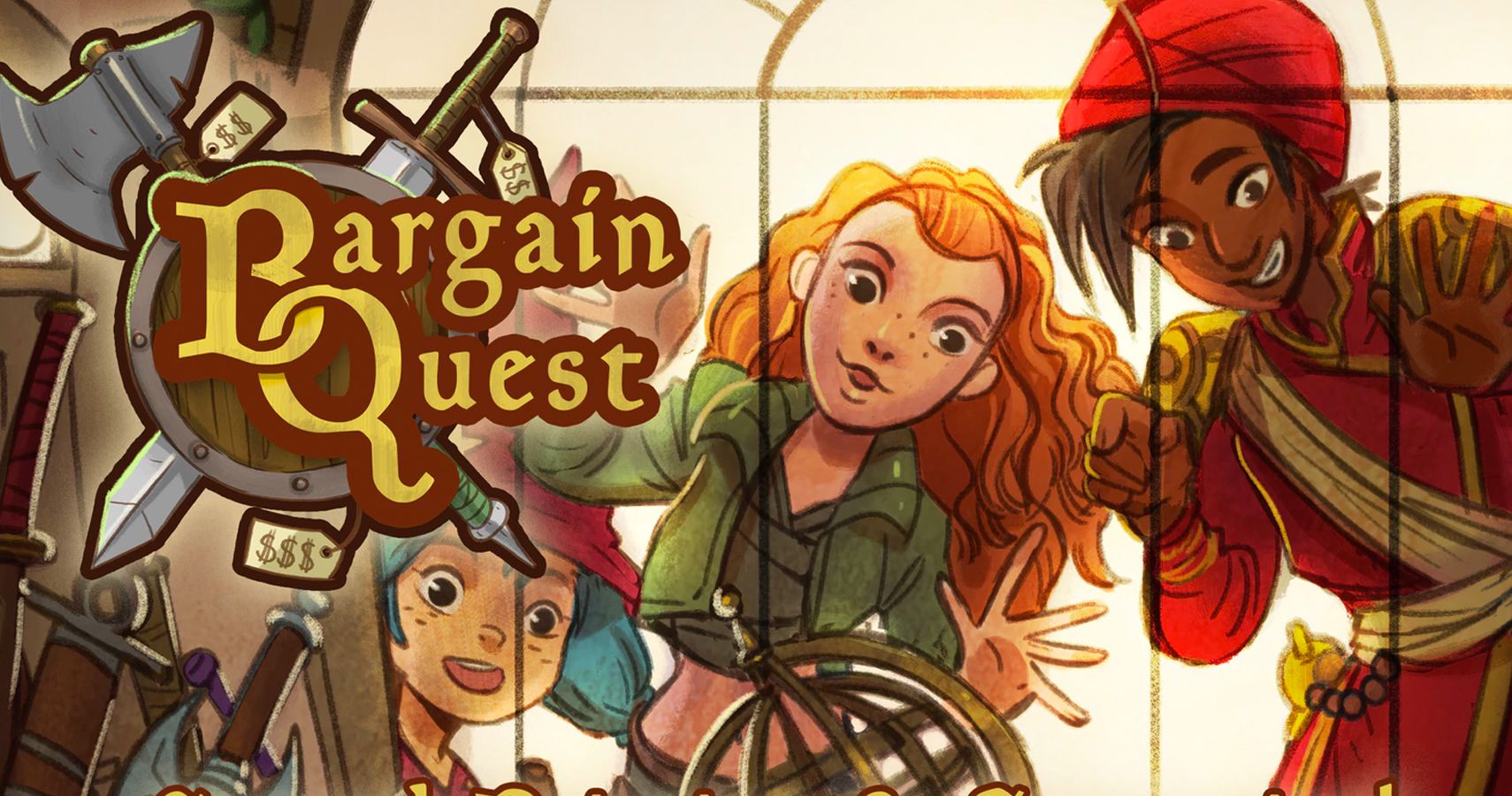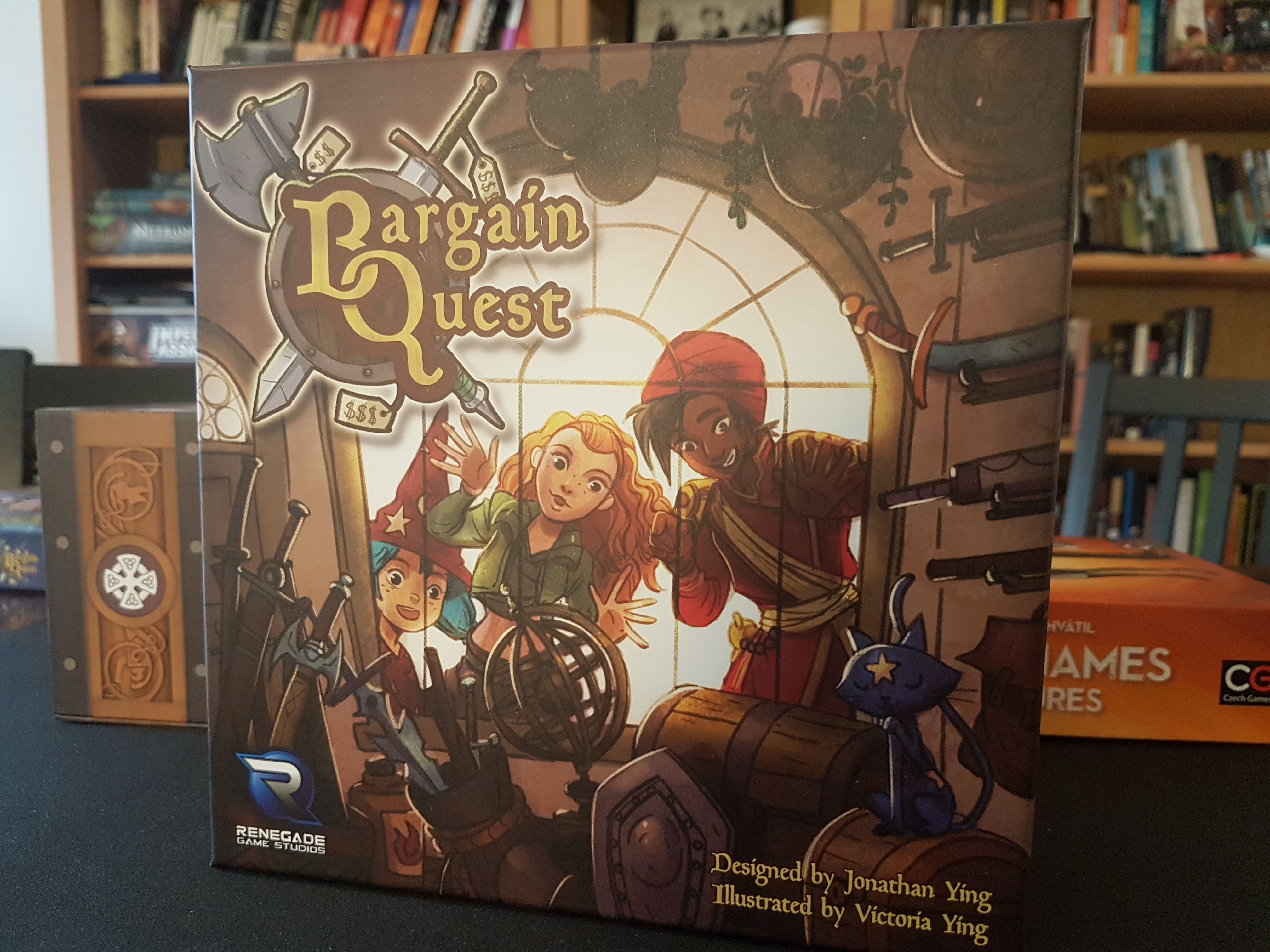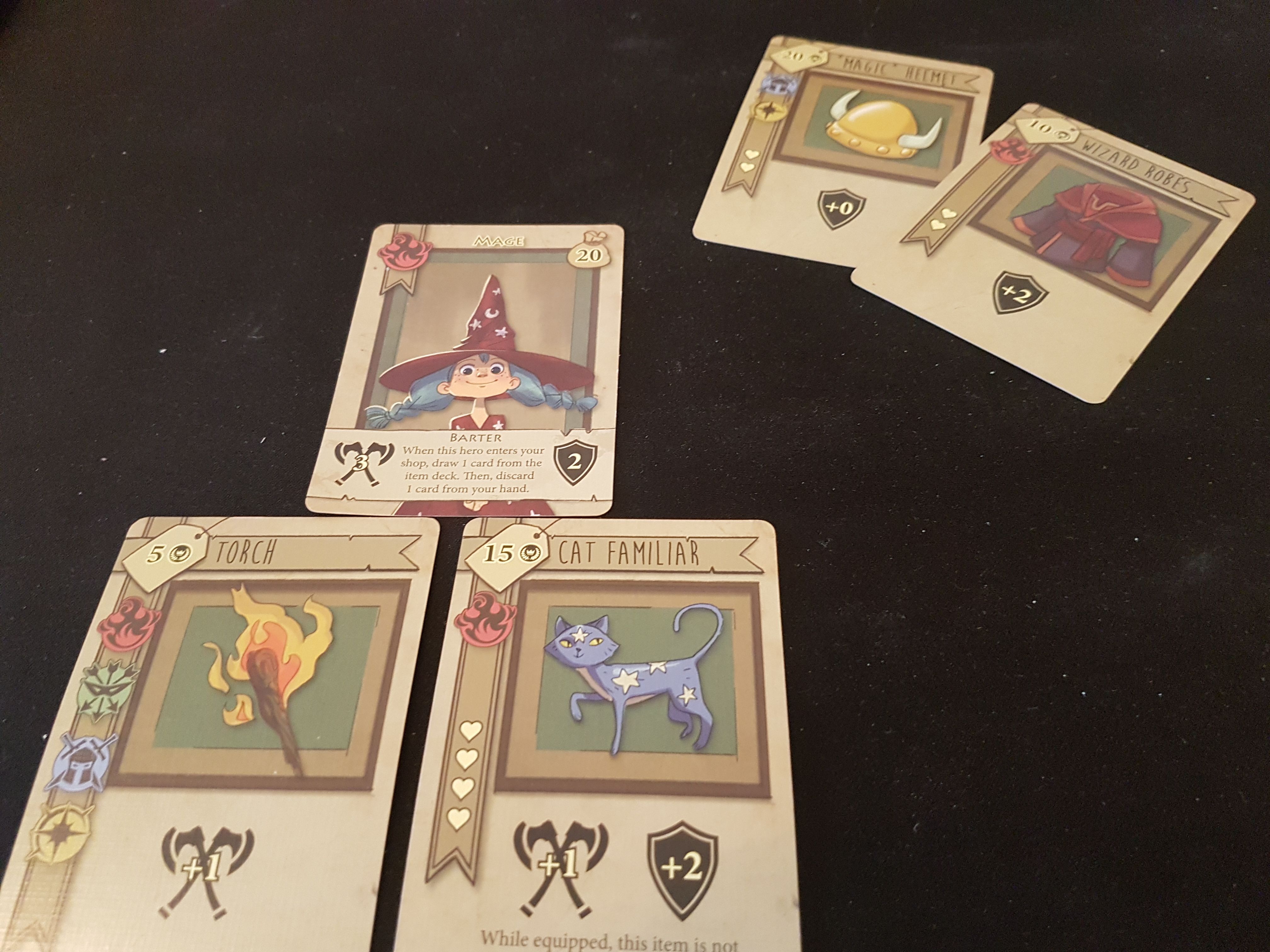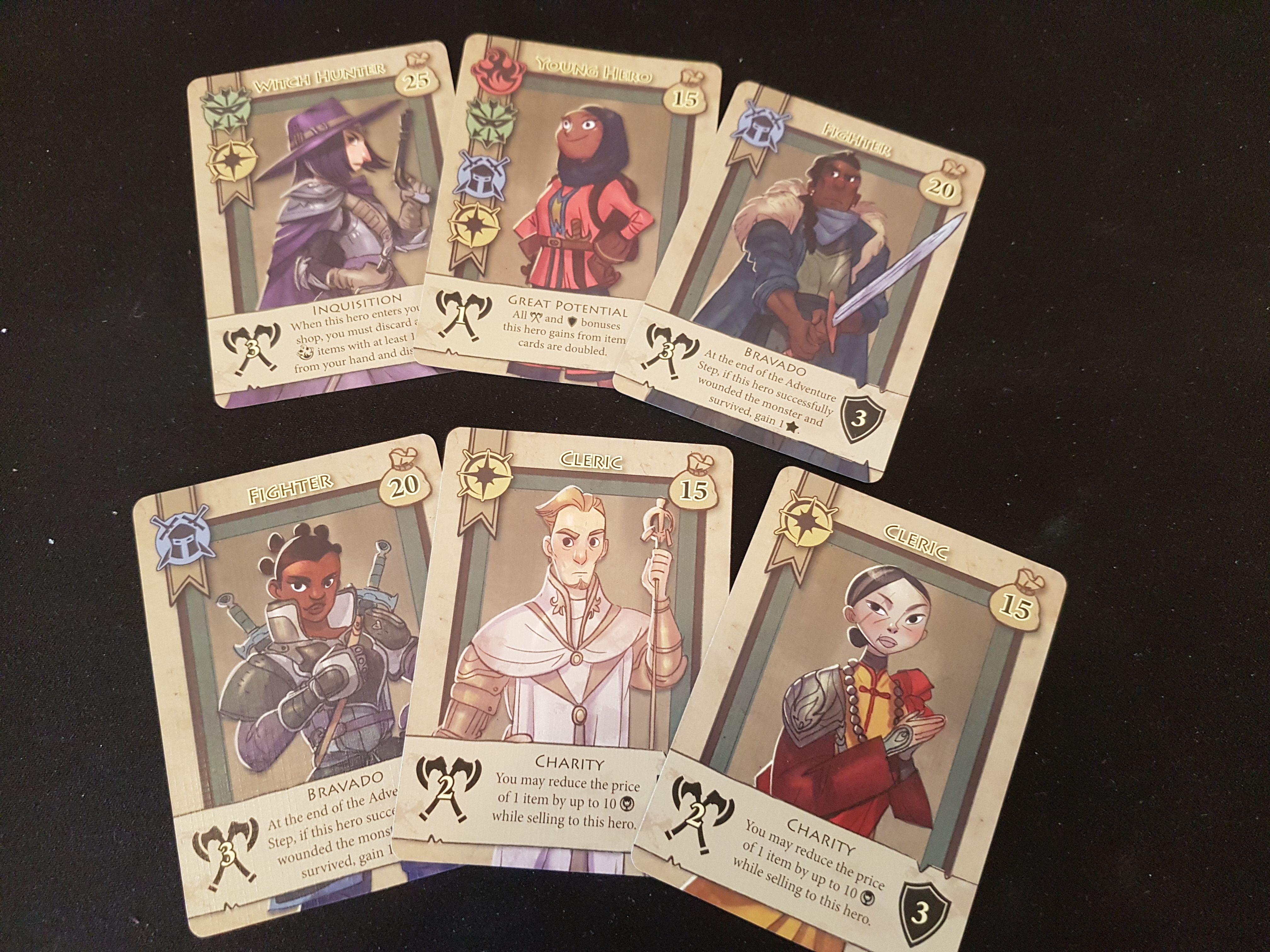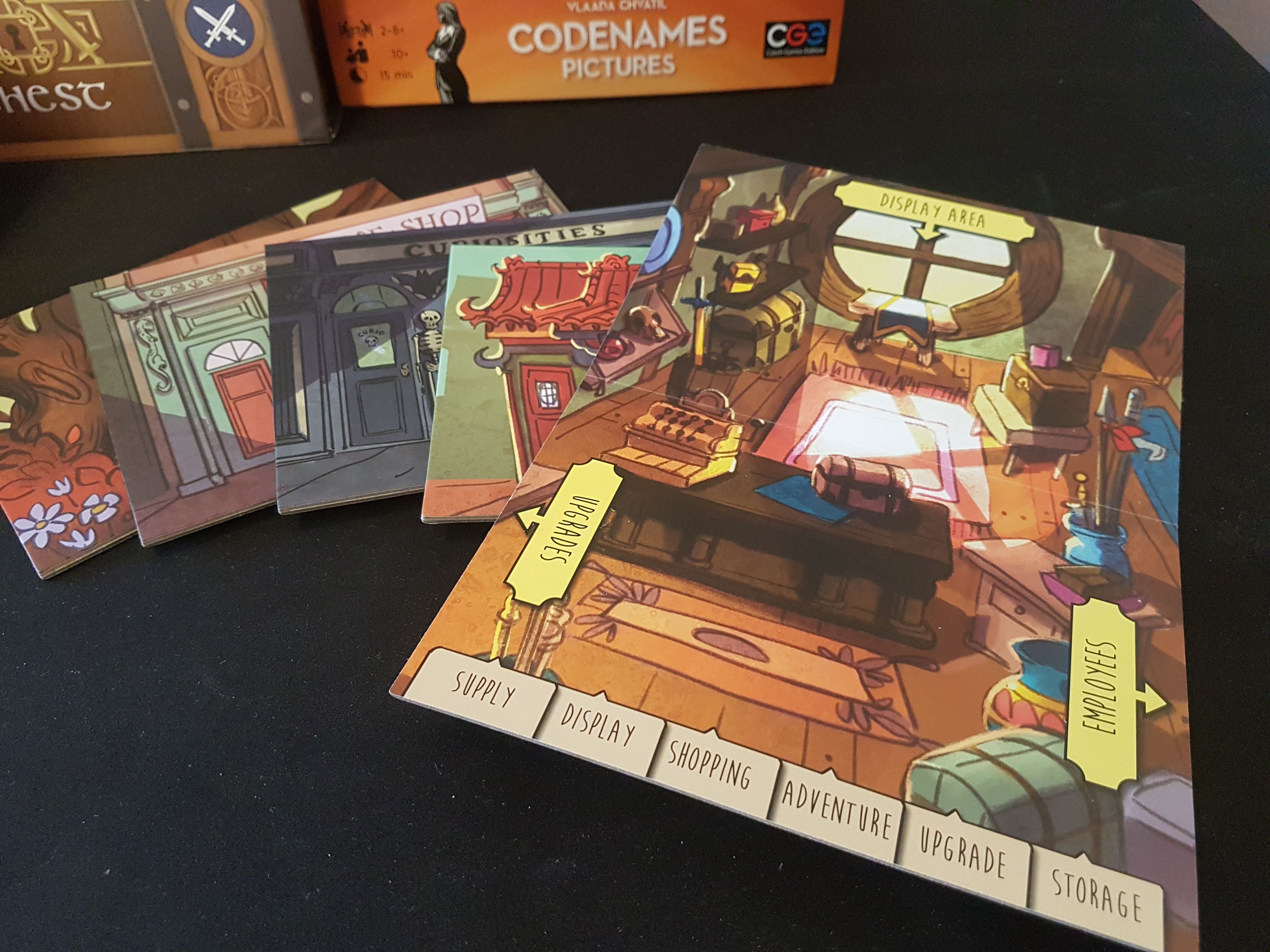In Bargain Quest, designed by Jonathan Ying, your typical fantasy town is besieged by typical fantasy monsters: dragons, ogres, orcs, goblins, and so on. Heroes assemble, equip themselves with magical items, and march off to fight the invaders. However, players don't take on the roles of the adventurers - instead, each player in Bargain Quest runs the shop that's selling those expensive bits of gear.
Reap All The Benefits Without Risking Your Life
The game itself is relatively straight-forward. Once everyone has selected their shop board, players draft hands of item cards, each of which are appealing to different sorts of adventurers, and worth different amounts of cash. Then, they choose one to put on display in the window to draw in customers, and sell as much as they possibly can to whoever walks through the door. Heroes, thus laden with weaponry and items, go off to fight the monster. Heroes who damage their foe earn the shop that equipped them one victory point; similarly, heroes who survive earn that shop another point, while also returning to town weighed down with loot. Heroes who don't survive, well... there are always more heroes. Until there aren't. Along the way, shops are upgraded with more storage, better window displays, and unscrupulous employees; most unsold item cards are discarded, and the next round begins.
The player with the best shop wins, and points are measured both by how much money that shop has once all the monsters are defeated and by victory points earned when the heroes they equipped damage and/or survive their battles.
The genre of "shopkeeper to adventurers" isn't densely populated, but it isn't without its members. The video games Recettear and Moonlighter come to mind; along with Bargain Quest, all these games still give some control of the questing element to the player, to different degrees, with Bargain Quest definitely leaving most of the interesting decisions to the display and shopping phases.
Decisions, Decisions
The biggest decision a player gets to make in each round of Bargain Quest is what to put on display. This is the real core of the game, because of one simple fact: you can't sell what's on display. A player might put the fanciest item they own in the window, but when a hero walks in, they've got nothing but cheap knickknacks left to sell. Try putting something worthless in the window, and you may end up with the runt of the hero litter walking into your shop, with barely any coin to spend and not a chance in heck of surviving their encounters with the monsters.
Beyond that, players are competing for the heroes, and not every item appeals to every hero. A Wizard Hat in the window will draw in the Mage, but you'd better hope you have something left in your shop that the Mage will even want to buy. Of course, you might be happy just because you kept that Mage from entering your neighbor's shop - now they've just got a Cleric, and nary a Cleric item on their shelves to sell.
The look of the game is utterly fantastic. Rich with detail and diversity, there is so much more heart thrown into this game by artist Victoria Ying than was necessary, but it is all appreciated. And we are never left wanting, either; even individual copies of cards each have unique art.
The game is also downright funny - it's hilarious when the scrappy Young Hero takes up their sword, rushes headlong into adventure and... oh, it turns out they're a bit nervous, actually. And they die. And the next hero who shows up in town? Well, they're just a rich Noble, with more dollars than sense. But, it turns out if you sell enough swords to someone, they just might leave a dent in the dragon's scales before they... well, they also die. Oh, well. Who's next?
The Black Market Expansion
The first major expansion for the game, The Black Market Expansion, adds, appropriately enough, Black Market Items that can be added to drafting hands once a particular upgrade has been purchased. These items have unique new abilities that emphasize parts of the game that were present, but not heavily, in the base game. Items might have downright negative effects on heroes, for instance, but can be sold at decent prices. Other items give bonus money or points if the heroes survive, or if they die, perhaps encouraging a more money-focused playstyle. The new upgrade also allows the players to discard cards from the drafting hand, allowing them to keep potentially beneficial cards from other players, while adding more useless cards. Of course, this is a risk/reward tactic that not everyone should participate in. Even in the base game, if too many heroes, poorly equipped, fall at the claws of the monster, the game ends and nobody wins.
The game has components for up to six players (or eight, with the expansion), but four or five may be the best number for your choices to matter while still providing a lot of variety. In larger games, somewhat arbitrary tiebreakers, like who is sitting to the left of the first player, come into play more often, and players may be stuck with the poorest heroes despite putting their best cards on display.
Overall, Bargain Quest is a fantastic little game. It fits, and deserves to be, on anyone's shelf, either as a gateway game for new players or as a quick game for veterans that includes a number of interesting, difficult decisions in each game.
5 Out of 5 Stars
A review copy of Bargain Quest was purchased by the author for this review. Bargain Quest is available in local board game stores and online here.
Bargain Quest

